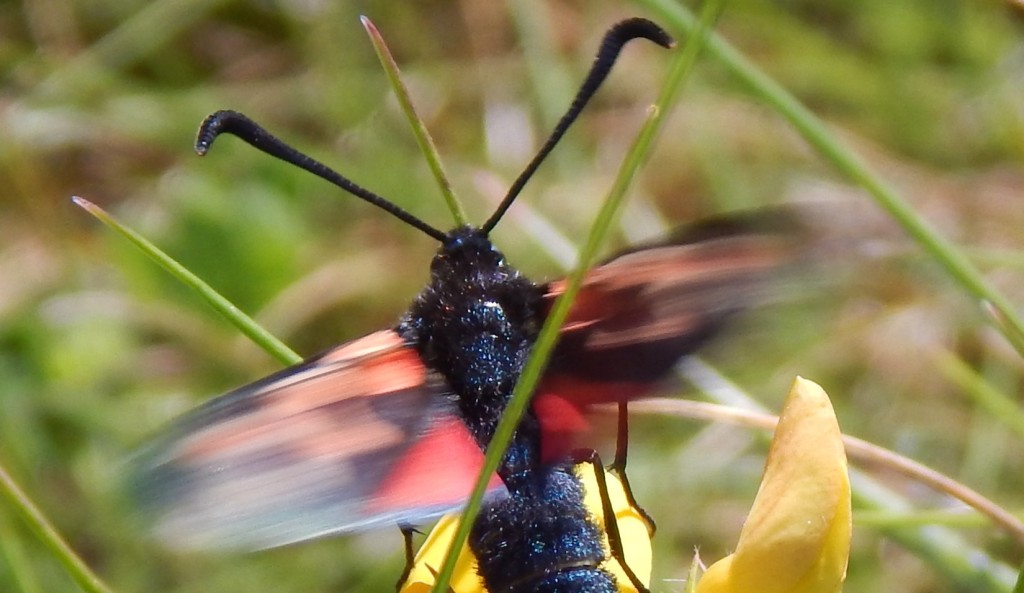
[365] Zygaena filipendulae, Six-spot Burnet
Zygaena lonicerae, Narrow-bordered Five-spot Burnet
Zygaena trifolii, Five-spot Burnet
Introduction
For my final post we have Zygaena filipendulae, Zygaena lonicerae and Zygaena trifolii, three very similar species of brightly coloured day-flying moths known as Burnets.
Zygaena filipendulae is the Six-spot Burnet and Zygaena trifolii is the Five-spot Burnet. Sometime two of the six spots can merge to make identification difficult. Zygaena lonicerae, the Narrow-bordered Five-spot Burnet is almost identical to Zygaena trifolii.
Some of approximately a thousand species in the family Zygaenidae are also called Burnets.
Note that Sphyma zygaena, the Smooth Hammerhead Shark, and other Hammerhead Sharks, used to belong to an obsolete genus called Zygaena and retain it as a scientific synonym.
Taxonomy
Kingdom – Animals
Phylum – Arthropods
Class – Insects
Order – Lepidoptera (Butterflies and Moths)
Clade – Heterocera (Moths, paraphyletic)
Family – Zyganeidae
Genus – Zygaena
Subgenus – Zygaena
Group – Filipendulae
Scientific Names – Zygaena filipendulae, Zygaena lonicerae, Zygaena trifolii
All three species have scientific synonyms in the genus Sphinx (in the Hawkmoth family, Sphingidae.)
Names
Burnet means brown and is cognate with brunette.
Zygaena comes from the Ancient Greek zugaina, the hammerhead shark. Linnaeus first used the name for Zygaena filipendulae, presumably because of some apparent resemblance. Sharks were also given the genus name Zygaena but they had to change this under rules that give precedence to first use.
Filipendula is a genus of wildflowers that includes Meadowsweet, Filipendula ulmaria, a species that just missed inclusion in this blog. The genitive ending in filipendulae means ‘of Filipendula.’ Similarly, lonicerae comes from [213] Lonicera, Honeysuckle and trifolii comes from Trifolium the [343] Clover genus. None of these species is actually associated with any of these three food sources. As I may have said before, scientific names are never changed just because they are wrong.
[You have to be careful. Genera like Filipendula, Lonicera and Trifolium are always capitalized but species epithets are always conspicuously uncapitalized.]
Description
All the moths in the family Zygaenidae contain Hydrogen Cyanide (Prussic acid) in their bodies at all stages and many of them have colourful appearances to ward off predators. Like [350] the Cinnabar Moth, they are day-flying and don’t conceal themselves. Unlike other moths they hold their antennae forward when at rest.
The three species are very similar in appearance. If you can see six clear spots it’s probably the six-spot version.
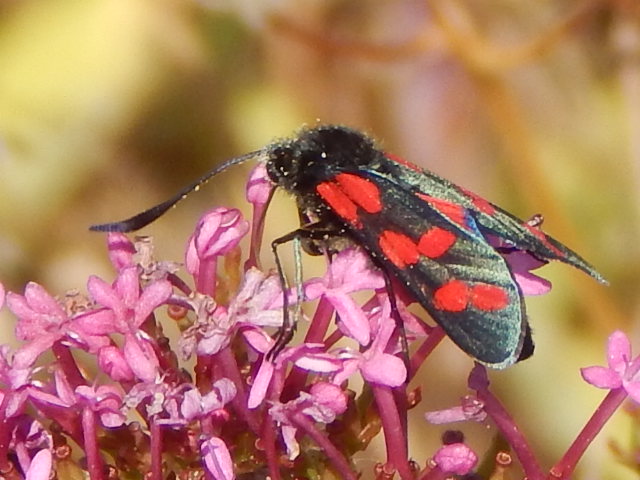
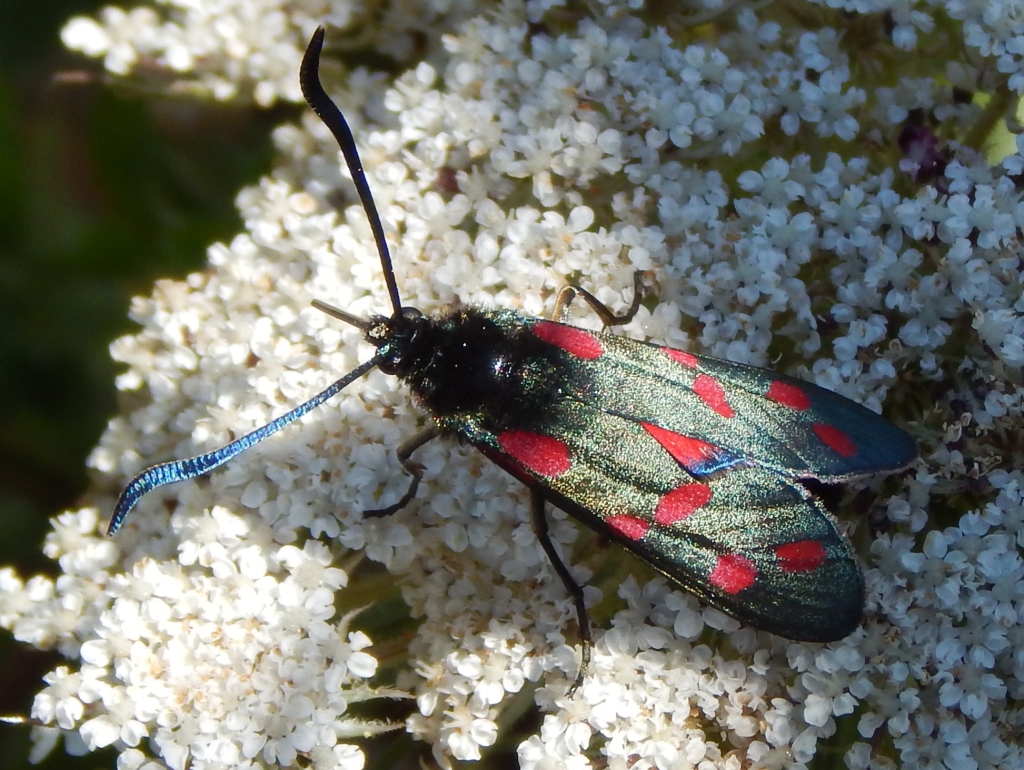
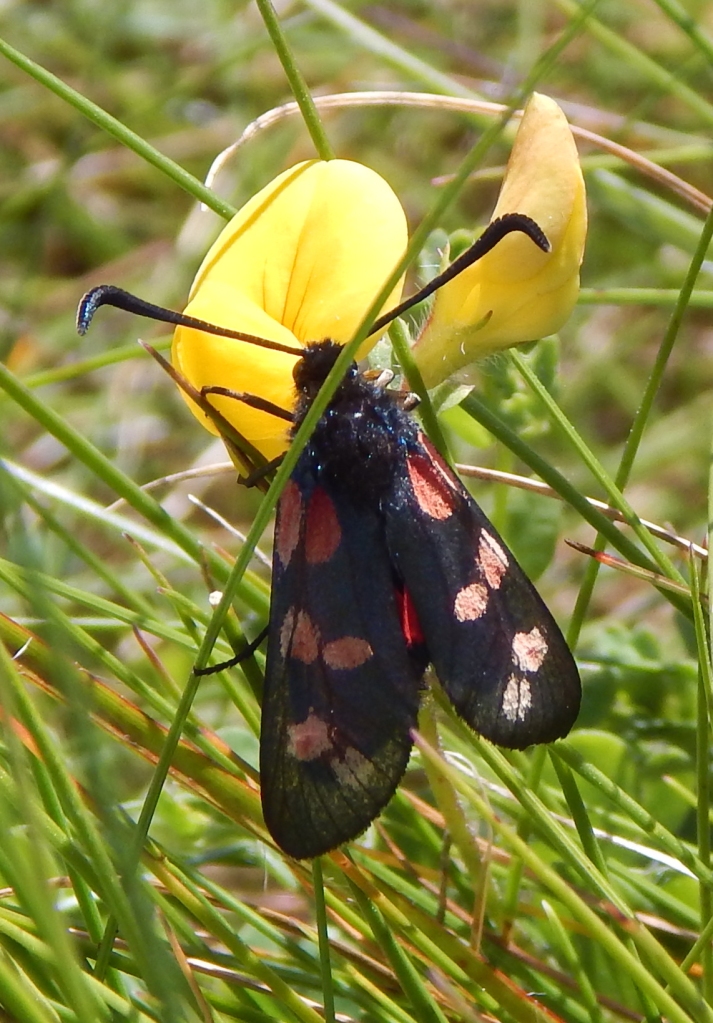


If you can’t, then it’s either one of the other two species or a six-spot not showing its spots well.
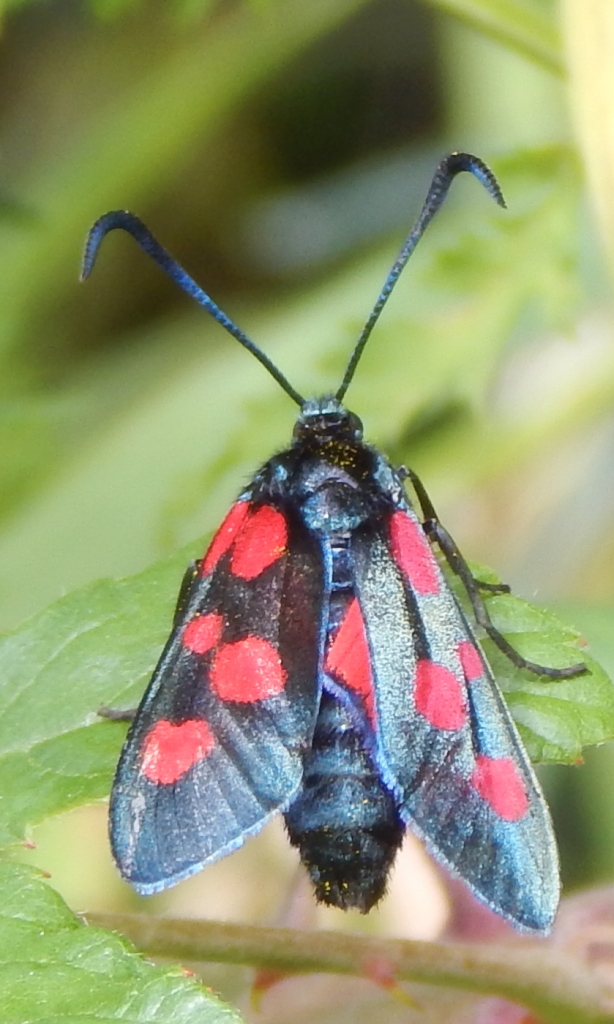
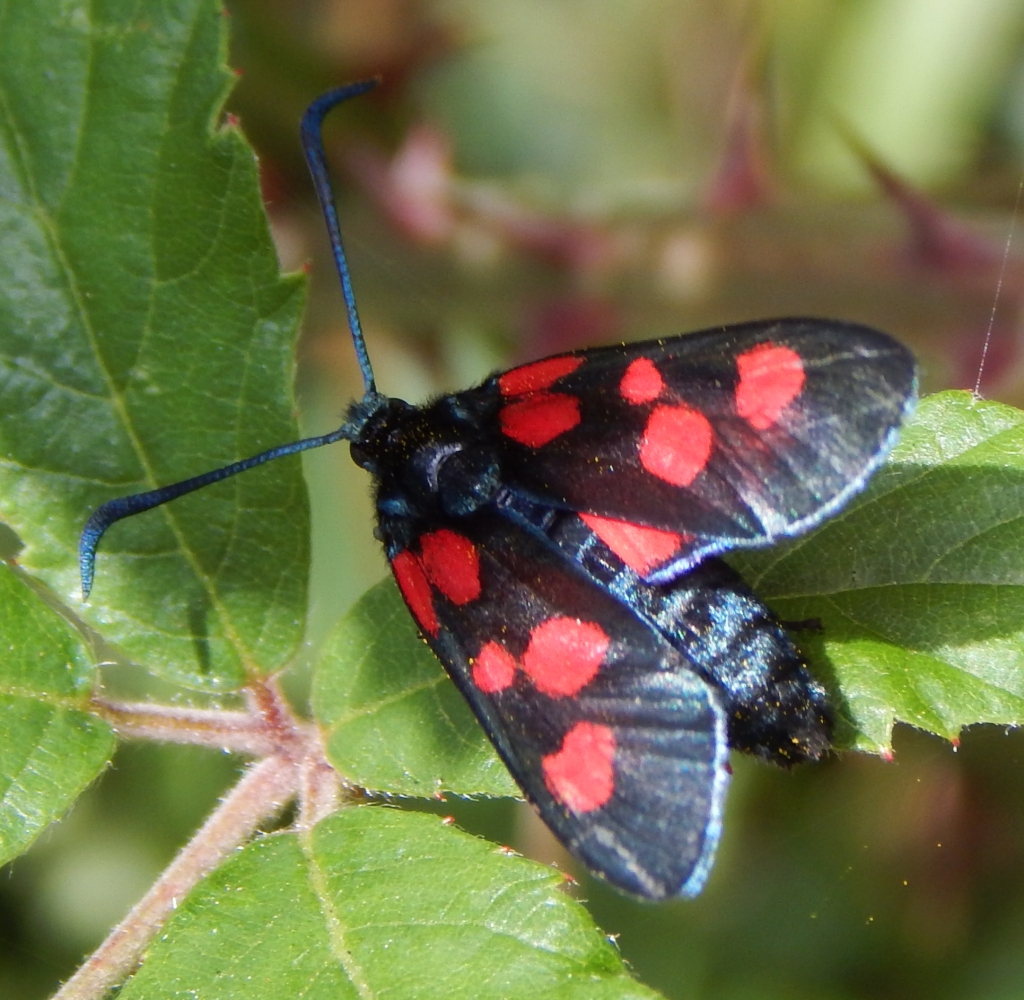
They are the only three species making the genus Zygaena, subgenus Zygaena, group Filipendulae.
Habitat
Zygaena filipendulae is common throughout most of Europe including all of the UK except the Scottish mountains.
Zygaena lonicerae is common through much of Europe including England and Wales but not Scotland.
Zygaena trifolii has a smaller range including Western Europe. Its UK range is just the South of England and most of Wales.
You can find all three species feeding on a variety of plants, not including those that give them their species epithets.
Other Notes
This is the last of my daily blogs. I have enjoyed doing them but haven’t decided yet whether to do a few extra topics later. Watch this space!
See also
There are three other species of Zygaena that are much less widespread in the UK, being restricted to parts of Scotland.
